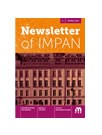On the Cesàro average of the “Linnik numbers”
Volume 180 / 2017
Abstract
Let be the von Mangoldt function and r_{Q}(n)=\sum_{m_{1}+m_{2}^{2}+m_{3}^{2}=n}\varLambda(m_{1}) be the counting function for the numbers that can be written as sum of a prime and two squares (that we will call “Linnik numbers”, for brevity). Let N be a sufficiently large integer. We prove that for k \gt 3/2 we have \sum_{n\leq N}r_{Q}(n)\frac{(N-n)^{k}}{\varGamma(k+1)}=M(N,k)+O(N^{k+1}) where M(N,k) is essentially a weighted sum, over non-trivial zeros of the Riemann zeta function, of Bessel functions of complex order and real argument. We also prove that with this technique the bound k \gt 3/2 is optimal.









